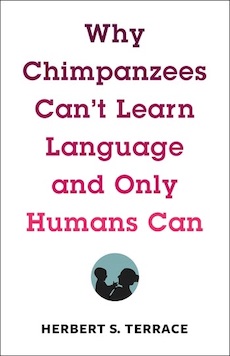By Douglas Keith Candland
Samuel Pepys, whose detailed dairy of the days’ events provides information on the minutiae of Elizabethan and Shakespearean times, one day took his lunch to the docks of London to watch ships unload their content from places far away and hardly known. His interest fell upon a ‘she-baboon’ being unloaded from Africa. He wondered if it might be taught to reveal its thoughts were it taught to express them via its hand-motions.
The idea remained fallow state until beginning in the 1960s, a set of observations began the US with the chimpanzees Washoe, Sarah, LANA, Nim, Kanzi, the gorilla Koko, and others, less exceptional linguistically, by seemingly inexhaustible US researchers and the Japanese researcher of Ai, the ape whose specialty is numbers.
Each human worker used different ‘languages’ in this recognizably scientific attempt to allow the apes to demonstrate what they know, centering on whether they could demonstrate language as defined by humans. Washoe was taught American Sign Language; Sarah, symbols forming an invented language; and Kanzi, also by symbols but spoken sentences, Nim— that is part of the story told in Herbert Terrace’s book here reviewed.
Terrace is the last human primate-language researcher writing. Attempts to teach language to our fellow apes is once again on land made barren by scientific quarrels, lack of funding, and a university-wide tenure system that leaves no room for scholarship and researches requiring years of dedication. A review of ape-language studies is not, however, Terrace’s sole aim. Nonetheless, knowledge of it by the reader is requisite for judging the promise of his ideas.
Terrace ventures into new, potentially fertile, land when he posits two developments that in his opinion reshape the issues regarding ape language. One is the field of paleoanthropology, here restricted to the time since ‘modern’ humans’ structure, especially that evolved in verbal communication, developed differently from that of our great ape relatives, the chimpanzees. The second is recent news (i.e., since the ape-language observations) regarding human-baby interactions. The news involves the discovery that the roots of verbalization depend on shared baby-interaction between baby and adult at the baby’s age much younger than believed previously.
The exact relationship is tacit between paleoanthropologic hypotheses and data on infant-adult interaction, yet surely connected to the final chapter, this a series of amendments and maybe contradictions to Chomsky’s well known and continuously referenced theory of a universal grammar. If Chomsky-ism believes that the purpose of language is to think, Terrace believes otherwise, that thinking begins after the human baby learns names and naming through a form of interaction unique to our species.
The diligent reader may wonder from time to time if the underlying problem, ironically, may be our difficulty in defining such words as ‘language’, ‘grammar’, and, perhaps, ‘words.’ Does Latin as a language have syntax? Why do signing apes sign only in English? Do words require spaces to separate them? Just as there are many languages, grammars, and kinds of words (e.g., abstract, nominative, referential), so may what appears a puzzle may be reduced to a problem created by using words as if everyone knows their exact operational meaning.
Why Chimpanzees Can’t . . . is assuredly not the last word (so to speak) on ape language, the evolution of hominid language, the requite socialization between human beings, or words and grammar to be formed, but it is a successful heuristic device for what is sure to be the next spurt of action in our continuing efforts to understand our species.
Douglas Keith Candland (ΦBK, Pomona College) is the editor of Review of General Psychology and the Homer P.Rainey Professor of Psychology and Animal Behavior, Emeritus at Bucknell University. Bucknell University is home to the Mu of Pennsylvania chapter of Phi Beta Kappa.




